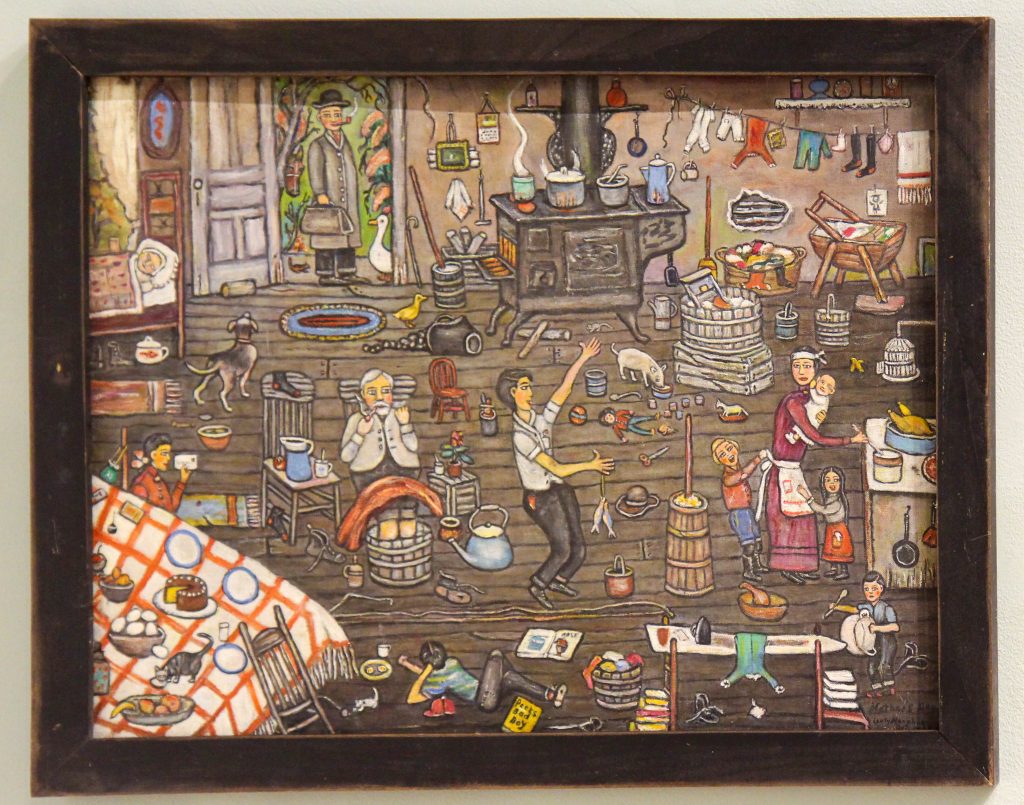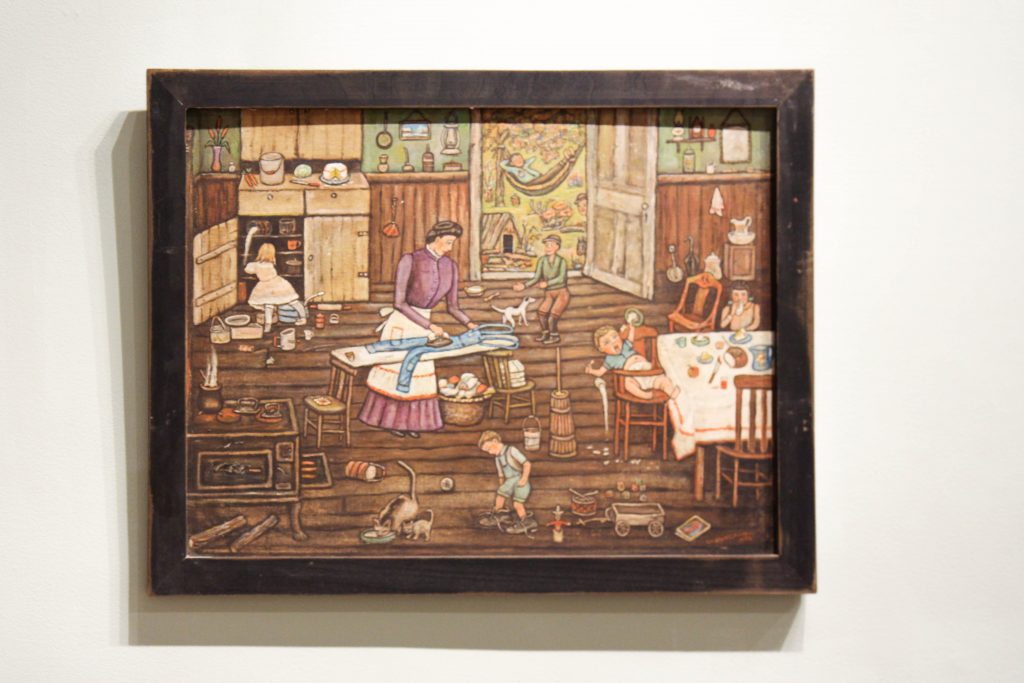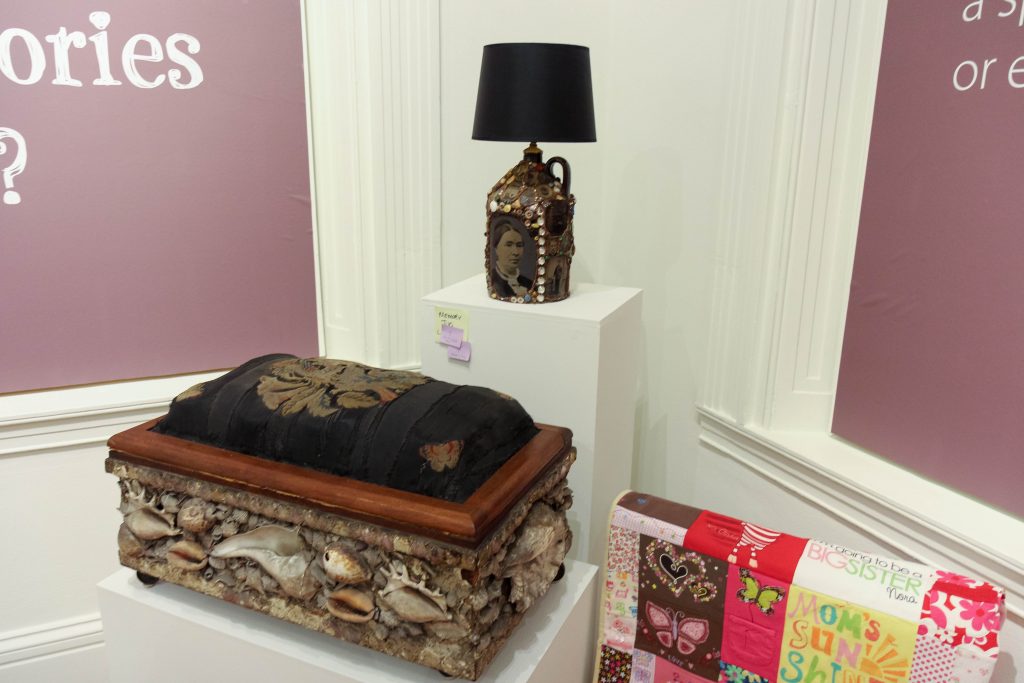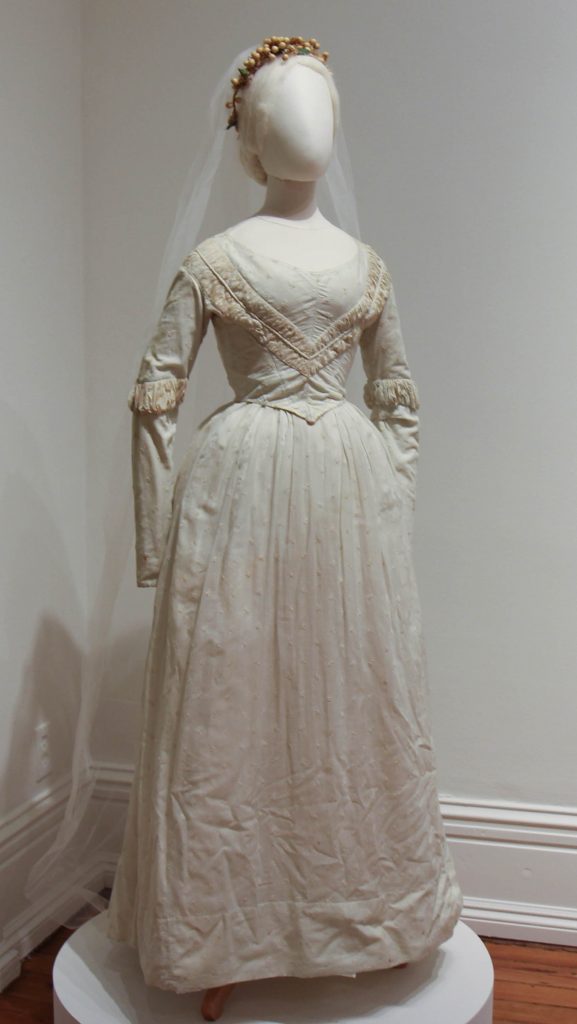Culture
‘Hindsight: the Art of Looking Back’ examines the links and discrepancies between memory, nostalgia, and history
By: Emily Votaw
Posted on:
Memory, nostalgia, and history have never been synonyms – even if collectively we have a bad habit of treating them like they are.
Through April 24, the Decorative Arts Center of Ohio is exploring the concepts of memory, nostalgia, and history – and the discrepancy between them – through a display of works by Ohio folk artists from the 1800s and early 1900s. Entitled “Hindsight: The Art of Looking Back,” the exhibition showcases work by “memory painters” such as Leuty McGuffey Manahan, whose recollections of her youth and early childhood inspired legions of detailed, colorful, nostalgic paintings.

A theme of the exhibition is the re-examination and contextualization of memory – as well as the cherishing of it, of course — but with the underlying recognition that one person’s memory is certainly not the same thing as fact.
“These paintings aren’t necessarily accurate representations of even the artist’s memories, they’re constructed memories, so to speak. They were just telling folks that they were painting their memories, whether they were memories of childhood or life in a certain place or a time,” said Andrew Richmond, President and CEO of Wipiak Consulting & Appraisals, co-curator of “Hindsight” alongside Hollie Davis, President and CEO of prices4antiques.com. Davis and Richmond are a married couple who also notably write a regular column for Maine Antiques Digest, a monthly trade publication about the antiques and art market.

The two work well together. Richmond has an academic background well-suited to facilitating educational opportunities, such as the staging of exhibitions like “Hindsight,” and Davis has a background in the humanities that gives her crucial insight into the larger thematic context that makes exhibitions such as “Hindsight” so meaningful. Davis said the themes of memory, nostalgia, and history at the heart of “Hindsight” are particularly timely.
“Nuance was a really important word for us when we were working on this, particularly the lack of nuanced conversation about the difference between memory and nostalgia,” said Davis. “When you choose to knock off all the rough edges of your memory — which you certainly personally have the right to do since it is your story — but there is a real problem when you insist your memory is then the same version of the story everybody else lived — when you impose your nostalgia as being more meaningful than someone else’s memory. We just felt like this is an important conversation and that this exhibition gave us an opportunity to gently lead people to just think about the difference between what you remember and what reality was.”

“Hindsight” is rife with opportunities for this kind of reflection.
Take, for example, a 1937 mural entitled “Land Office of the Ohio Company,” by William Mark Young, depicting a benevolent interaction between an indigenous person of the region we know as Marietta and the European colonizers who would eventually name it that. The historical truth is far removed from what the mural depicts. The indigenous people of the region, such as the Shawnee, were violently and forcibly removed from their ancestral lands by European colonizers.
“As we continue to study history, we learn more things about history. We also learn some of the things that we were taught as a child are just not true or maybe not quite true. And if the purpose of learning history is to not repeat the bad parts of history, then we have to seek to understand how history actually happened. And that means warts and all,” said Richmond. “We can’t just look back through these rose colored glasses and see these warm and fuzzy nostalgic images and think, ‘oh, that’s how it was in the 1950s or in the 1850s or in ye old colonial times’ and think that we’re gonna learn anything about how to do better moving forward. We have to take off those glasses and and look at what sometimes is the harsh reality of how things were, if not for people like us, for people who aren’t like us or weren’t like us.”

Richmond and Davis hope “hindsight” proves to be thought-provoking, engrossing, and perhaps more familiar than visitors might readily think.
“Certainly we hope people just enjoy looking at some nifty old stuff. There’s certainly gonna be things in there that are going to evoke personal memories. Things that people will make say, ‘oh, I had one of those when I was a kid,’ or ‘I remember my grandma had one of those,” said Richmond. “And again, we hope the exhibition will allow visitors to just start to think about how we remember our own past, our own personal family past, our community’s past, and how we use those memories to construct our own stories — our own narratives.”
“Hindsight: the Art of Looking Back” will be open during the Decorative Arts Center of Ohio’s usual business hours: Wednesday through Friday from 11 a.m. to 4 p.m. and Saturday and Sunday from 1 p.m. to 4 p.m. Entrance to the Decorative Arts Center of Ohio is always free.

